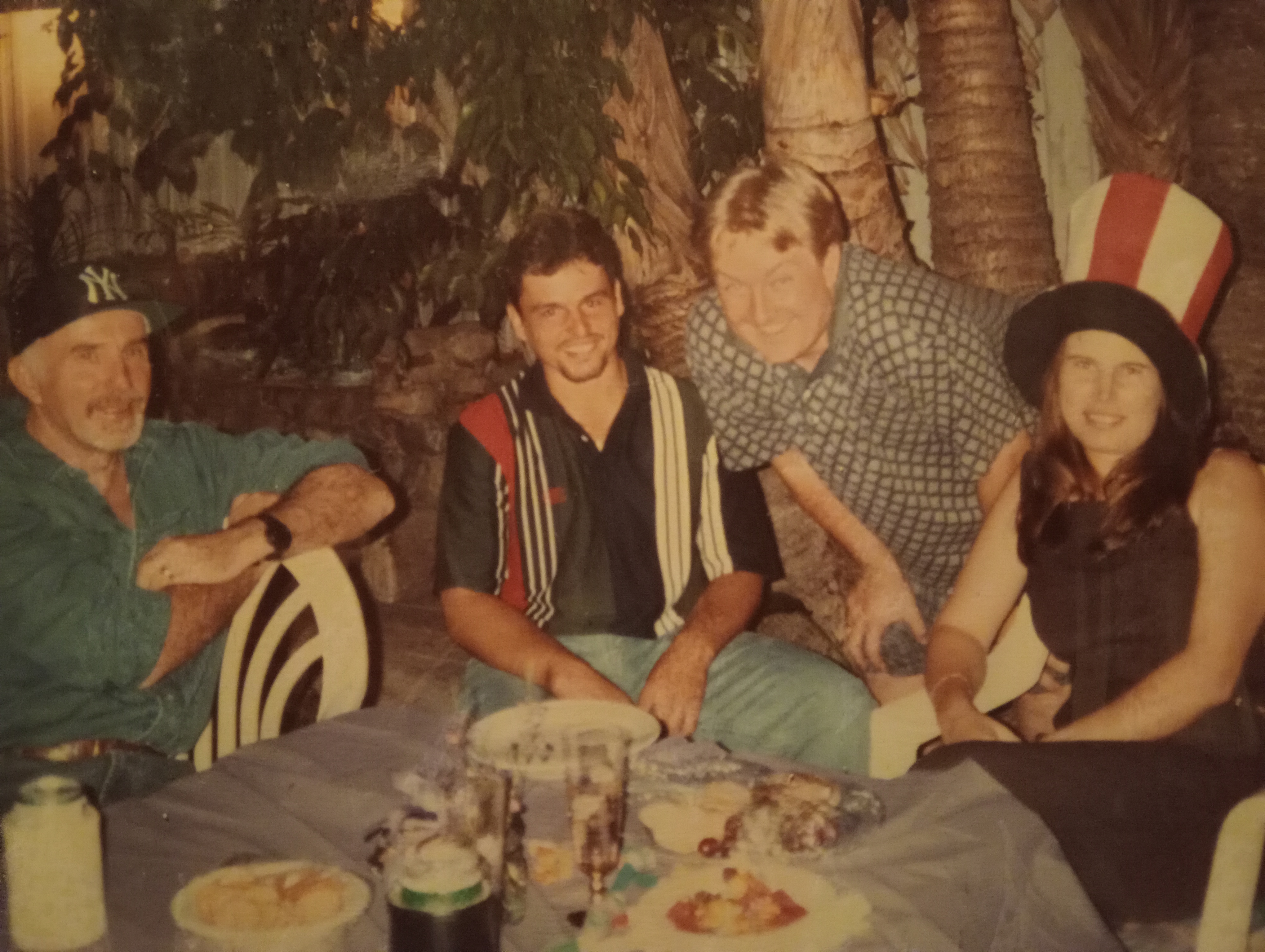Video Below:
Australia’s mining sector has long been a pillar of the nation’s economy, supplying critical minerals and creating jobs. However, increasing environmental concerns, international climate commitments, and community expectations are driving a push to reduce the environmental footprint of mining — and, in some cases, reduce mining activity altogether in favour of greener solutions.
1. Transitioning to Renewable Energy and Lower-Impact Operations
Where mining remains essential, companies are turning to renewable energy to reduce the sector’s carbon footprint. Fortescue Metals Group is building a 190 MW solar farm at its Cloudbreak mine and planning a 2–3 GW solar and wind project in the Pilbara to help achieve “real-zero” emissions by 2030. (https://www.theaustralian.com.au/business/mining-energy/big-solar-farm-for-forrests-fortescueoperation/news-story/671c43038e9dff6ca2e325694b4041db)
Rio Tinto’s Gladstone alumina operations have signed 20-year deals to source 90% of their energy from solar and battery storage, cutting annual emissions by an estimated 5.6 million tonnes of CO₂. (https://www.theguardian.com/environment/2025/mar/13/rio-tintos-solar-power-and-battery-purchase-for-gladstone-aluminium-operations-praised-as-right-direction)
Projects like the Dugald River Solar Farm, with 184,000 panels and 88 MW capacity, also demonstrate how mining regions can pivot toward renewables to reduce their reliance on fossil fuels. (https://www.couriermail.com.au/news/what-dugald-river-solar-farm-means-for-north-west-minerals-province/news-story/6a3b604ceee5b4a47022fbcc8ebff6b9)
2. Green Technology to Reduce Environmental Impact
Mining companies are trialling cleaner technologies to reduce the scale and intensity of operations. Fortescue’s hydrogen-powered haul truck “Europa” has begun testing in the Pilbara, replacing diesel and lowering emissions from heavy equipment. (https://www.mining-technology.com/news/fortescue-first-hydrogen-powered-t264-truck-arrives-in-pilbara)
Electric and hydrogen-powered haul trucks are also in development across Western Australia to transition away from diesel fleets entirely. (https://www.abc.net.au/news/2024-08-28/diesel-mining-truck-converted-to-electric-to-lower-emissions/104230918)
Collaborations with equipment manufacturers, such as Fortescue’s partnership with Liebherr, are accelerating the move toward zero-emission mining fleets. (https://www.australianmining.com.au/fmg-and-liebherr-team-up-on-green-mine-haul-trucks)
3. Renewable Microgrids and Battery Storage
Hybrid microgrids powered by solar, wind, and battery storage are enabling mines to reduce — and eventually phase out — diesel power generation. The Agnew gold mine operates Australia’s largest off-grid renewable microgrid, delivering 56 MW of clean power. (https://www.abc.net.au/news/rural/2021-11-15/green-mines-a-renewable-energy-evolution/100613266)
At the St Ives mine, battery arrays (up to 48 MWh) help store and smooth renewable power generation, reducing the need for fossil fuels during peak demand. (https://discoveryalert.com.au/news/renewables-adoption-mining-australia-transformation-2025)
4. Scaling Down and Diversifying Beyond Mining
Some industry leaders recognise that reducing reliance on mining is part of the long-term path to sustainability. Fortescue has secured nearly US $2 billion to advance its decarbonisation strategy, including projects that go beyond mining toward renewable energy production. (https://www.reuters.com/sustainability/boards-policy-regulation/australian-miner-fortescue-lands-near-2-billion-loan-advance-decarbonisation-2025-08-07)
However, challenges remain. Rio Tinto has acknowledged that producing “green steel” in Australia faces economic and technical barriers, making a full shift away from traditional mining difficult without stronger carbon pricing and policy support. (https://www.reuters.com/sustainability/climate-energy/rio-tinto-says-no-economic-incentive-green-steel-australia-2025-08-07)
The Productivity Commission has called for a national strategy to drive emissions reduction, diversify regional economies, and support workers in transitioning away from mining toward renewable energy and other sustainable industries. (https://www.theaustralian.com.au/nation/politics/anthony-albaneses-net-zero-transition-wont-be-cheap-or-easy-productivity-commission-warns/news-story/ff2e3ebeb4bd0911933bf44843a9bccd)
Summary
Reducing Impact: Renewable energy and green technologies are helping to lower the environmental footprint of mining. Cleaner Operations: Hydrogen and electric machinery are replacing diesel in some sites. Renewable Infrastructure: Microgrids and storage are providing reliable, fossil-free power. Long-Term Change: Policy, investment, and economic diversification will be key to reducing mining dependence in Australia. By scaling back environmentally harmful operations, embracing clean technology, and investing in alternative industries, Australia can protect its environment while still supporting regional communities and the economy.
Feeding The Beast Of Celebrity Culture
In the digital age, where information travels at the speed of light, the public's fascination with celebrity life has become an insatiable hunger. We are living in an era where the line between public and private life for those in the spotlight has blurred, and we, the consumers of content, are the ones continually feeding this beast. But what drives this relentless appetite, and what are the consequences of our collective obsession?
At its core, our fascination with celebrities is a mix of escapism and aspirational living. We are drawn to the glitz, the glamour, and the seemingly perfect lives portrayed on social media and in tabloids. For many, following a celebrity's journey provides a form of escapism from the mundanity of everyday life. We become invested in their relationships, their successes, and their failures as if they were characters in a real-life soap opera. This parasocial relationship—a one-sided bond where a fan feels a connection to a public figure—is a powerful driver of engagement, fueling an endless demand for more information.
Social media has poured gasoline on this fire. Platforms like Instagram, X, and TikTok allow celebrities to curate their own narratives, offering what appears to be an unfiltered glimpse into their lives. This perceived authenticity makes them feel more accessible and relatable, strengthening the parasocial bonds. However, this access is often a carefully constructed illusion. A simple post can be a meticulously planned marketing tool, and a heartfelt caption can be a strategic move to control a narrative. We, the followers, often play into this by eagerly consuming and sharing this content, making us active participants in the celebrity's brand management.
The media landscape has also adapted to this consumer demand. News cycles are increasingly dominated by celebrity gossip, viral moments, and scandals. Tabloids and entertainment news outlets thrive on clicks and views, which are directly proportional to the public's interest in celebrity drama. This creates a self-perpetuating cycle: the more we consume, the more content is produced to meet that demand, and the more deeply entrenched celebrity culture becomes in our daily lives.
But the consequences of feeding this beast are not without cost. For celebrities, the constant scrutiny can lead to immense pressure, anxiety, and a complete lack of privacy. The smallest mistake can be magnified into a global scandal, and their personal lives are constantly judged in the court of public opinion. For the public, this obsession can lead to a distorted sense of reality. We may find ourselves comparing our own lives to the curated highlights we see online, leading to feelings of inadequacy and discontent. It also diverts our attention from more pressing global and local issues, as our collective bandwidth becomes consumed by the latest celebrity headline.
Ultimately, "Feeding The Beast Of Celebrity Culture" is a collective effort. It is driven by our inherent desire for connection, entertainment, and aspiration, amplified by the digital tools at our disposal. While there is no denying the entertainment value, it is worth pausing to consider the true cost of our relentless consumption. Perhaps by consciously choosing what we engage with and recognizing the difference between curated content and reality, we can begin to tame this beast, or at the very least, understand the role we play in its feeding.
Universal Love: The Cosmic Current of Compassion
Beyond the interpersonal and societal, there exists a profound, all-encompassing force often referred to as universal love or cosmic love. This is not merely an emotion felt by individuals, but a fundamental principle, an inherent quality of existence itself, and the deepest expression of what we understand as compassion. In this mystical sense, universal love is the very essence from which all things emanate, a boundless ocean of benevolent energy that permeates the fabric of the cosmos.
The Unifying Field of Being
In many mystical traditions, universal love is seen as the ground of being – the underlying reality that connects every atom, every star, every consciousness. It's the silent hum of the universe, the invisible thread that weaves together the tapestry of creation. When we speak of it as the "physical embodiment of compassion," we're not suggesting it has a physical body in the human sense, but rather that it is the substance from which all manifest reality is formed, and its fundamental characteristic is profound, unconditional care.
Consider it as:
The Blueprint of Connection: Before anything was separate, there was a unified field of love. This universal love is the original blueprint for connection, a constant pull towards harmony and integration. Compassion, then, is our conscious participation in this cosmic blueprint, an alignment with this inherent oneness.
The Creative Impulse: Mystical traditions often describe creation as an act of divine love. The universe expands and unfolds not out of indifference, but out of a benevolent urge to express itself, to bring forth myriad forms of life. This creative impulse is inherently compassionate, ensuring the conditions for existence and flourishing.
The Sustaining Force: This cosmic love isn't just about creation; it's also about sustenance. It's the energetic flow that maintains balance, facilitates healing, and guides evolution. When we experience moments of profound grace, synchronicity, or inexplicable healing, it's often attributed to tapping into this universal, benevolent current.
Compassion as Echo, Reflection, and Catalyst
If universal love is the cosmic current, then human compassion is our individual and collective ability to echo, reflect, and act as a catalyst for this larger force within the manifest world:
An Echo: Our capacity for compassion is an echo of the universal. It's the divine spark within us that resonates with the boundless love of the cosmos. When we feel deep empathy or an urge to alleviate suffering, we are tuning into this fundamental universal frequency.
A Reflection: We become conduits through which this vast, formless compassion can find tangible expression in the world.
In this mystical sense, it's the ever-present, benevolent energy of the cosmos, and our compassion is the most direct, "physical" way we can participate in, express, and experience this profound, all-encompassing love that binds existence together. It is the very heart of the divine, manifesting as the impulse to care for all.
Why Entertainment Careers Can't Risk Controversial Connections
In the dazzling world of entertainment, image is everything. For actors, musicians, influencers, and even behind-the-scenes professionals, their public persona is meticulously crafted, and for good reason. One wrong move, one ill-advised association, can send a glittering career plummeting faster than a dropped microphone. It’s a harsh reality: those in the entertainment industry simply cannot afford to be seen as associated with anyone controversial. But why is this the case? Let's break down the layers of risk.
Brand Endorsements and Financial Fallout
The lifeblood of many entertainment careers, especially for high-profile individuals, comes from brand endorsements. Companies invest millions in associating their products with popular, positive, and widely appealing figures. When an entertainer is linked to a controversial individual or issue, it immediately poses a massive risk to these brands. Reputational Damage: The brand's reputation becomes intertwined with the celebrity's. If the celebrity is seen with someone controversial, the brand risks being perceived as endorsing or condoning that controversy. Loss of Deals: This often leads to immediate termination of contracts. Brands are quick to cut ties to protect their public image and shareholder value. Losing these lucrative deals can be a devastating financial blow, crippling a career.
Industry Blacklisting and Opportunities Drying Up
It's not just fans and brands that react. The industry itself is highly sensitive to public perception and potential liabilities. Studios, producers, directors, and even fellow artists will often distance themselves from anyone deemed a "risk." Risk Aversion: Production companies and networks are businesses first and foremost. They prioritize projects that are likely to succeed financially and avoid anything that could lead to public relations nightmares or legal complications. Damaged Reputation within the Industry: An entertainer known for associating with controversial people might be seen as difficult to work with, a liability, or simply not worth the potential headaches. This can lead to fewer auditions, roles, or creative opportunities. Loss of Trust: Collaborations are built on trust. If an artist's judgment is questioned due to their controversial associations, others may be hesitant to work with them.
Perception Becomes Reality: The public, fueled by headlines and social media, often jumps to conclusions. Explanations or justifications often fall on deaf ears once a narrative of "guilt by association" takes hold. No Room for Nuance: The fast-paced news cycle and short attention spans leave little room for nuanced explanations. A photo, a brief encounter, or even an old connection can be blown out of proportion.
One the other side of the coin(but much less common), an influencer may chase clout by allying themselves against controversial figures, and brands seeing an opportunity may use this knowledge to cash in. For those in the entertainment industry, maintaining a pristine public image isn't vanity; it's professional survival. The interconnected nature of endorsements, audience loyalty, and industry relationships means that any perceived association with controversy can quickly dismantle years of hard work and talent. It's a stark reminder that in the spotlight, every connection counts, and the line between personal life and professional consequence is often impossibly thin.
While no individual theory in psychology can capture our full nature, in many ways Carl Jung was ahead of his time. His deeply personal intuitions about human nature often called Jungian psychology is a school of thought that emphasizes the role of the unconscious, dreams, and symbolism in understanding the human psyche. Unlike Freud's focus primarily on the personal unconscious derived from individual experience, Jung proposed a deeper, more universal layer: the collective unconscious. This collective unconscious is inherited and contains archetypes, which are universal, primordial patterns or images present in the human mind across all cultures and times, influencing our thoughts, emotions, and behaviors.
Key parts Jung saw in the self, often conceptualized as archetypes or fundamental components of the psyche, include:
The Ego: This is the center of consciousness, responsible for our sense of identity and our awareness of ourselves and the world. It is the part of the psyche that makes decisions and integrates experiences.
The Persona: Derived from the Latin word for an actor's mask, the persona is the social face we present to the world. It's the consciously constructed identity we use to adapt to society and fulfill various roles, often concealing aspects of our true nature.
The Shadow: This archetype represents the repressed, unacknowledged, or undesirable aspects of the personality, both negative and potentially positive, that the conscious ego has rejected or suppressed. It embodies qualities that don't fit our self-image or societal norms.
The Anima and Animus: The Anima is the unconscious feminine aspect within a man's psyche, while the Animus is the unconscious masculine aspect within a woman's psyche. They influence our relationships, dreams, and provide a connection to the collective unconscious.
The Self: This is the central and most important archetype, representing the totality and wholeness of the personality. The Self encompasses both conscious and unconscious aspects, including the ego, persona, shadow, and anima/animus. It acts as an organizing center for the entire psyche, striving for integration and the realization of one's full potential, a process Jung called individuation. Individuation is the lifelong journey of integrating these disparate parts of the psyche to become a unified and authentic individual.
Carl Jung's analytical psychology is profoundly shaped by his unique and often turbulent life experiences. His early childhood, marked by a distant father and an eccentric mother who claimed communion with spirits, instilled in him a fascination with the unconscious, symbolism, and the non-rational aspects of the human mind, leading him to explore areas like the occult and mythology early on. The pivotal break with Sigmund Freud, initially his mentor and a father figure, triggered a deep personal crisis for Jung around 1913. During this period of intense introspection, which he called his "confrontation with the unconscious," he actively engaged with his own dreams, and visions, meticulously recording them in what became known as his "Red Book." This profound personal journey informed the core tenets of his theories, including the collective unconscious, archetypes, and the lifelong process of individuation—the integration of conscious and unconscious elements to achieve psychological wholeness. Thus, Jung's psychology is not just an academic construct, but a reflection of his own arduous path towards self-discovery and meaning.

Why I'm Limiting Social Media to Just One Hour Each Day
For a long time, social media was my default. Scrolling through feeds was the first thing I did in the morning and the last thing I did at night. It was an always-on companion, a constant hum in the background of my life. But lately, I’ve felt a growing unease. The endless scrolling, the comparison trap, the feeling of being constantly "on call" – it was taking more than it was giving.
That’s why I’ve decided to implement a new rule: one hour of social media each day, only in the evening. It might sound drastic to some, but for me, it feels like a necessary step towards a more intentional and fulfilling life.
So, why the self-imposed restriction? Here are the reasons that pushed me to make this change:
1. Reclaiming My Time (and My Mornings!)
Let's be honest, how many hours do we genuinely lose to social media each day? Before, I'd pick up my phone, intending to check one notification, and an hour later, I'd find myself down a rabbit hole of irrelevant content. By pushing my social media usage to the evening, I'm reclaiming my mornings for productive activities, a peaceful start to the day, or simply enjoying my coffee without the digital noise. During the day, I can focus on work, hobbies, and real-life interactions without the constant pull of notifications.
2. Reducing Mental Clutter and Overwhelm
Social media, while a great tool for connection, can also be a significant source of mental clutter. The constant influx of information, opinions, and curated highlight reels can be overwhelming. It often left me feeling drained, anxious, or inadequate. Limiting my time means less exposure to this relentless stream, allowing my mind more space to breathe, focus, and genuinely relax. It's about creating a calmer mental landscape.
3. Fostering Deeper Connections (Offline)
It's ironic, isn't it? Platforms designed for "connection" can often make us feel more disconnected from the people physically around us. I found myself scrolling through acquaintances' lives instead of engaging meaningfully with my loved ones or pursuing my own interests. By dedicating my evenings to a focused hour of social media, I'm freeing up the rest of my time to invest in real-life conversations, phone calls with distant family, or engaging in activities that bring me joy and build genuine connections.
4. Improving Sleep Quality
This one is huge. The blue light from screens, the mentally stimulating content, the urge to "just check one more thing" – it all contributes to disrupted sleep patterns. By setting a hard stop on social media in the evening, well before bedtime, I'm giving my brain a chance to wind down properly. I'm hoping for better, more restful sleep, which in turn will positively impact my mood and energy levels.
5. Cultivating Mindfulness and Presence
When you're constantly connected, it's easy to live life through a screen, always documenting, always comparing, rarely truly being in the moment. This new approach is about being more present in my own life. It's about noticing the small details, engaging fully with my surroundings, and appreciating experiences without the immediate pressure to share them online.


